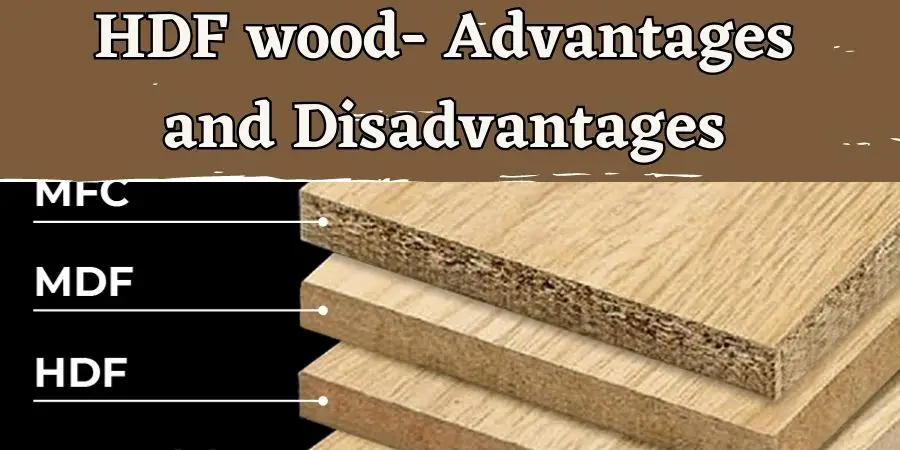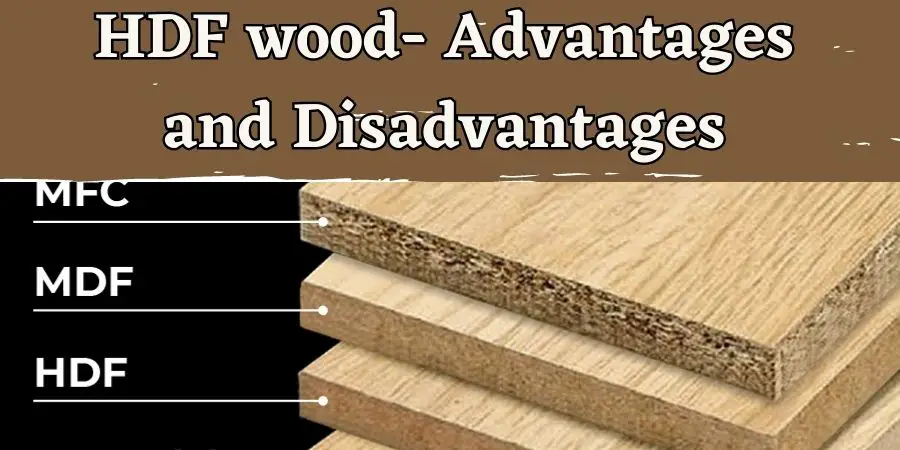HDF stands for “high-density fiberboard”. It’s a type of engineered wood product made by compressing wood fibers under high pressure and heat, creating a dense and uniform material that is popular for a wide range of applications, including flooring, furniture, and wall paneling.
The high-density nature of HDF wood makes it strong and durable, while its uniform texture and smooth surface make it easy to work with and achieve a consistent look and finish.
Table of Contents
How is HDF wood different from other types of engineered wood?
A: HDF wood is similar to MDF (medium-density fiberboard), but is denser and has a smoother surface. It’s also less prone to warping and other types of damage, making it a popular choice for flooring and other applications where stability is important.
Can HDF wood be painted or stained?
Yes, HDF wood can be painted or stained to achieve the desired look. Its smooth surface and consistent texture make it easy to achieve a clean and even finish.
Disadvantages of HDF

Not water-resistant
If you plan on using HDF wood for outdoor or bathroom projects, you may want to consider a different type of material. HDF wood is not water-resistant and can easily get damaged if exposed to moisture.
Prone to swelling and warping
Due to its composition, HDF wood is more prone to swelling and warping than other types of wood. This means that if it gets wet or is exposed to changes in temperature and humidity, it may not maintain its shape.
Limited design options
HDF wood typically has a uniform texture and appearance, which means that it might not be the best choice if you’re looking for a more unique or decorative finish. While you can still stain or paint HDF wood, it may not have the same natural beauty as other types of wood.
Difficult to repair
If HDF wood does get damaged, it can be difficult to repair. This is because it is made up of compressed wood fibers, which can’t be easily fixed with traditional wood fillers or patching compounds.
May contain harmful chemicals
Some HDF wood products may contain formaldehyde or other harmful chemicals, which can be released into the air and potentially cause health problems.
Be sure to check the labeling and choose a product that is certified as low-VOC (volatile organic compound) if you are concerned about indoor air quality.
Can be difficult to cut
HDF wood is denser and harder than some other types of wood, which can make it difficult to cut with certain tools.
You may need to use a saw with a higher tooth count or a carbide blade to get clean cuts.
Not as durable as solid wood
While HDF wood can be a more affordable alternative to solid wood, it is not as durable in the long run.
It is more prone to scratches, dents, and other types of damage, which may require more frequent repairs or replacements.
Limited structural uses
HDF wood is not typically used for structural applications like load-bearing walls or beams, as it does not have the same strength and stability as other types of wood.
Limited temperature resistance
HDF wood is not well-suited for applications that require high temperature resistance, as it can start to break down or lose its shape at elevated temperatures.
Limited screw holding ability
Because HDF wood is composed of compressed fibers, it may not hold screws as well as other types of wood. This means that you may need to use specialized hardware or techniques to ensure a secure hold.
Advantages of HDF
Affordable
HDF wood is generally more affordable than solid wood or other composite materials, making it a popular choice for budget-conscious homeowners and contractors.
Consistent quality
Because HDF wood is made from uniform wood fibers, it has a consistent texture and appearance, making it easy to work with and predict how it will look in your finished project.
Easy to paint and stain
HDF wood has a smooth and uniform surface that is easy to paint or stain, allowing you to achieve the look you want for your project.
Environmentally friendly
HDF wood is made from recycled wood fibers and can be easily recycled again at the end of its lifespan, making it a more environmentally friendly option compared to other materials.
Wide availability
HDF wood is widely available at home improvement stores and lumber yards, making it easy to find and purchase for your project.
Versatile
HDF wood can be used for a wide range of projects, from cabinets and furniture to flooring and wall paneling.
Easy to work with
HDF wood can be cut, drilled, and shaped with standard woodworking tools, making it easy for even novice DIYers to work with.
Uniform thickness
HDF wood is available in uniform thicknesses, making it easier to achieve consistent cuts and precise dimensions for your project.
Smooth surface
The surface of HDF wood is smooth and free from knots or other imperfections, making it ideal for projects that require a clean and even finish.
Stable dimensions
HDF wood is less prone to expansion and contraction due to changes in temperature and humidity, which can help to prevent warping or other types of damage to your project over time.
Best Uses
Best uses- Please write in informal tone and use subheadings.
Cabinets and furniture
HDF wood is a popular choice for cabinets, shelves, and other types of furniture. Its uniform texture and smooth surface make it ideal for creating sleek, modern designs, and it is also easy to paint or stain to achieve the desired look.
Flooring
HDF wood is commonly used as a core material for laminate flooring, as it provides a stable base for the flooring and helps to prevent warping or other types of damage over time. It is also an affordable alternative to solid hardwood flooring.
Wall paneling
HDF wood can be used to create decorative wall paneling, either as a standalone feature or as a backing material for other types of wall treatments. Its uniform texture and smooth surface make it ideal for creating a clean and modern look.
Doors and trim
HDF wood can be used for interior doors, trim, and moldings, providing a consistent look and feel throughout a room or home. Its stable dimensions and smooth surface make it easy to work with and achieve precise cuts and dimensions.
DIY projects
HDF wood is a great option for a wide range of DIY projects, including shelving, storage units, and even small pieces of furniture. Its affordability and versatility make it a great choice for those just starting out with woodworking or looking for a more budget-friendly option.





